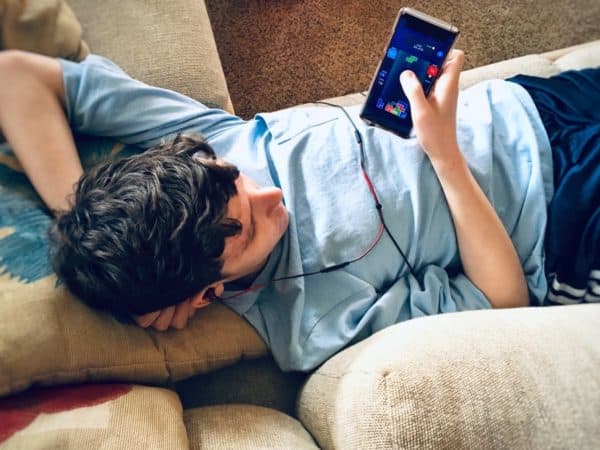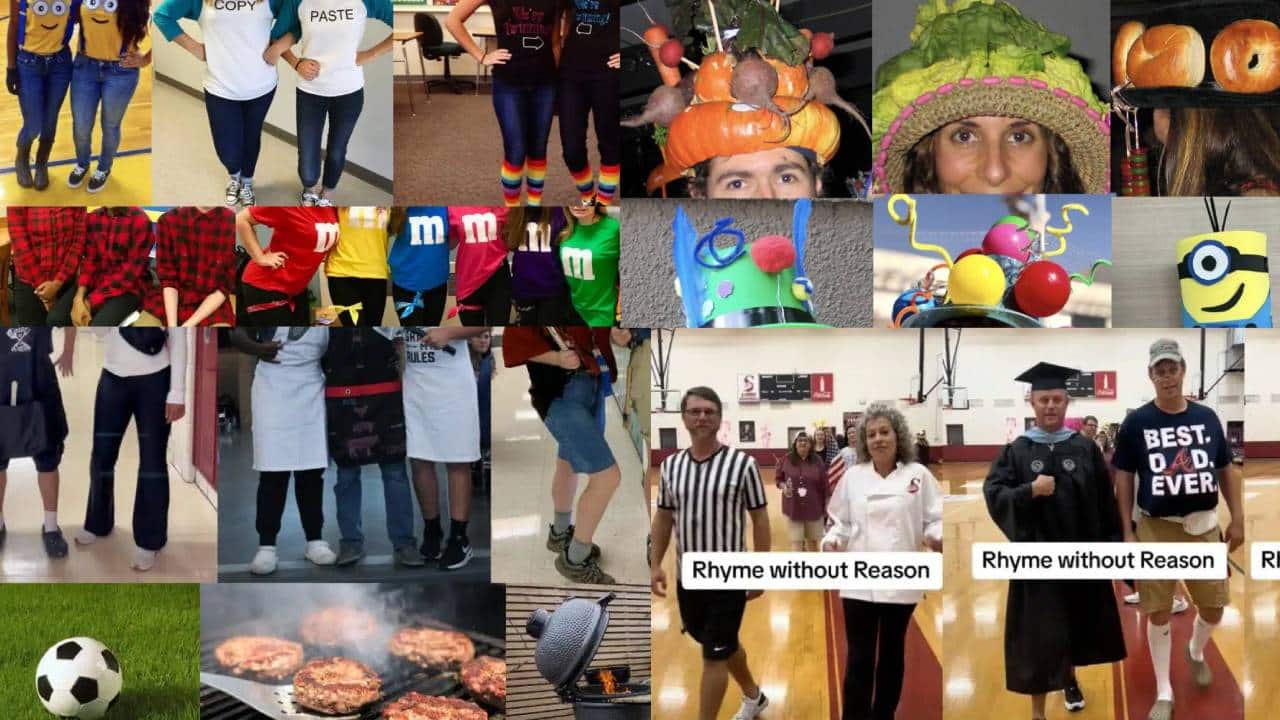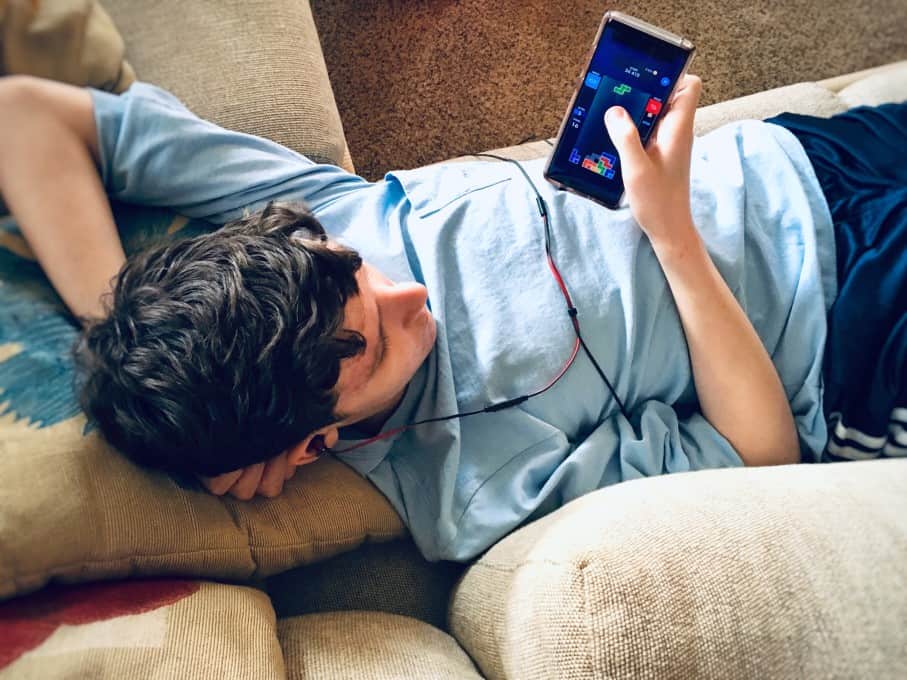Ah, another cozy family dinner with all of us, devouring some semi-homemade concoction I’ve cooked to nourish my beautiful family. Eventually, silence fills the air as the kids inevitably trail off into their phones mid-way through our meal. “How was your day?” I ask. “Fine,” or sometimes, “meh,” they reply.
Great. Another meal with little to no quality conversation time. Shouldn’t my family want to converse and verbalize every single detail of their lives with me, their mother?!! Seriously, am I expecting too much?
As it turns out…I might be.

Teens’ peer interaction is formative
My training as a social scientist tells me that this is a time when friendships and peer interaction are formative, and to my children, their phones are a gateway to this essential life force. After careful consideration, I internally acknowledge that I only have two options.
One, I can shut it all down and force my kids into retro-style, last-century methods of communication (i.e., prolonged and painful squirmy talks where my child gazes at the door like it’s an escape hatch from an alien abduction).
Or two, I can acknowledge that I don’t know absolutely everything about the universe and give in to education from younger generations on the benefits of communication via virtual formats.
While certainly there are drawbacks to spending too much time attached to one’s phone, I’ve come to acknowledge that the upsides are pretty compelling, too. After taking a hard look at the data and talking to the many college students I teach each semester, I’ve learned about the positive aspects of how teens and young adults communicate in the 21st century.
4 positive aspects associated with twenty-first-century communication
1. The teenage brain is hardwired to accommodate change.
Neuroscientists have documented that the human brain is uniquely receptive to novel information early in life. This type of neurological ability, called neuroplasticity, peaks between ages twelve and twenty-five (Scientific research on learning and the teenage brain 2021). As they are open to these new inventions, teens are primed to engage with technology and integrate it into their interpersonal engagement styles without hesitation. Simply put, they are more receptive to novel ideas about communication than we are because they are biologically designed to do so.
2. They understand the value of micro-interactions better than we do
Young people understand that mini bursts of social interaction can improve the quality of their relationships and increase self-esteem. Research conducted during the Covid period (when we lost many of our daily micro-communications) confirmed how important this type of engagement could be to maintain mental health. Even brief exchanges with casual acquaintances can foster a feeling of connection to the world around us (Keohane 2021). Our kids know this intuitively and freely offer small gestures of support through likes, hearts, or simple one-line responses to pictures or events posted by friends or family online.
3. Information is a trickle, not a flood
If we pay attention to the flow, however, we may get more than we think. Once I accepted that my kids would carry and use their phones during their school days, I began to appreciate the steady stream of information coming in throughout the day. Instead of a single conversation whereby I painfully extract information about their day from them, I now get quick messages, sent in real-time, about their experiences.
They share test scores, goofy stories, and friendship drama in quick texts between classes or during lunch. I know much more about my kids’ daily lives than ever before.
4. It’s all about perception
Our brains are designed to see things uniquely based on our developmental stage. Young people operate in the currency of fluid (new) knowledge, but adults have developed what is referred to as crystallized (experiential) knowledge. This means that as people grow older, they become more attuned to the significance of facial expressions, emotions, and the subtle body language of others (Quadagno 2022).
Adults acquire patience for the conversational needs of others and are more aware of how communication styles impact those around them. This emotional intelligence is only gained through experience and often leads to a softening of self-interest over time. It’s easy to develop a skewed set of expectations that young people should conduct themselves the same way as adults.
So, while we may be tempted to view teens today as unskilled at verbal interaction, it’s important to remember that none of us is born with a mastery of communication skills (I’m pretty sure our parents will fully attest to this!). One of the great things about life is that we are each a work in progress, with the ability to change and grow over time. This allows us to meet younger generations halfway and embrace the upsides that new forms of communication offer us.
References:
Keohane, J. (2021, August 5). The surprising benefits of talking to strangers. The Atlantic. Retrieved December 9, 2022
Quadagno, J. (2022) Aging and the Life Course: An Introduction to Social Gerontology. Edition, McGraw-Hill, New York.
Scientific research on learning and the teenage brain. University of Texas at Arlington Online. (2021, February 12). Retrieved December 9, 2022
More Great Reading:
The Teenage Brain
When Your Teen Stops Coming to You To Talk About Their Life

 PARENTING TIPS
PARENTING TIPS







 PREGNANCY
PREGNANCY








 BABY CARE
BABY CARE








 TODDLERS
TODDLERS








 TEENS
TEENS








 HEALTH CARE
HEALTH CARE






 ACTIVITIES & CRAFTS
ACTIVITIES & CRAFTS








 CONTACT
CONTACT ABOUT
ABOUT


